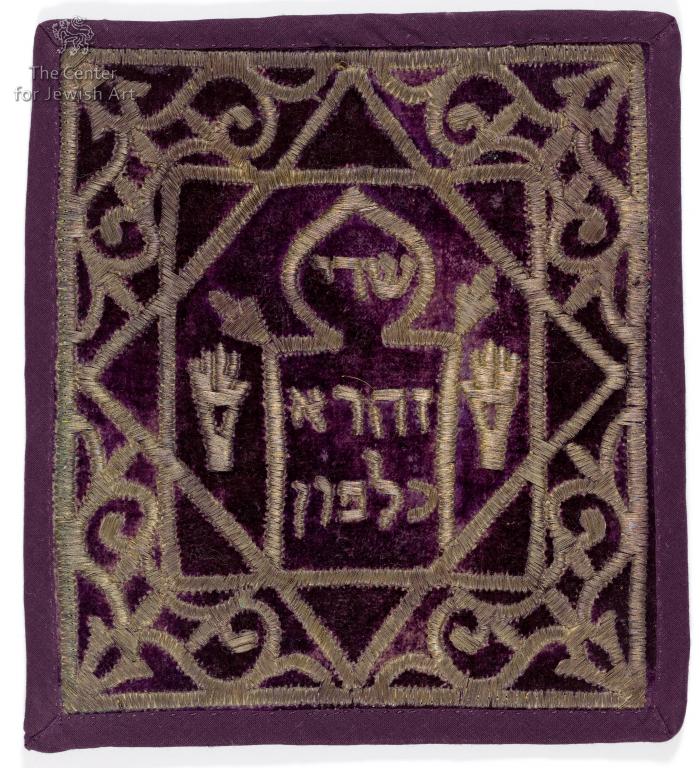Obj. ID: 39351 Mezuzah Cover, Morocco, circa 1920

sub-set tree:
The following description was prepared by William Gross:
A mezuzah (Hebrew: מְזוּזָה "doorpost"; plural: מְזוּזוֹת mezuzot) is a piece of parchment (often contained in a decorative case) inscribed with specified Hebrew verses from the Torah (Deuteronomy 6:4-9 and 11:13-21). These verses compose the Jewish prayer "Shema Yisrael", beginning with the phrase: "Hear, O Israel, the LORD (is) our God, the LORD is One". In mainstream, i.e. Rabbinic Judaism, a mezuzah is affixed to the doorframe of Jewish homes to fulfill the mitzvah (Biblical commandment) to inscribe the words of the Shema "on the doorposts of your house" (Deuteronomy 6:9). Some interpret Jewish law to require a mezuzah on every doorway in the home apart from bathrooms and closets too small to qualify as rooms. The parchment is prepared by a qualified scribe who has undergone many years of meticulous training, and the verses are written in black indelible ink with a special quill pen. The parchment is then rolled up and placed inside the case.
The Mezuzah for the interior room in a Jewish home in Morocco consisted of an elaborate cover over a niche in the usually plastered wall in which the parchment of the Mezuzah was placed. This textile cover was made for Zahara Kalfon. It was customary to use the name of a woman on such articles. While most such covers were fashioned from silver, particulary in Fez, there are textile covers in different shapes known as well. This embroidery features an arabesque arch, The Holy name of Shadai and two hands, representing both the Hands of the Cohanim and the hamsa.
Inscription: Shadai Zahara Kalton


